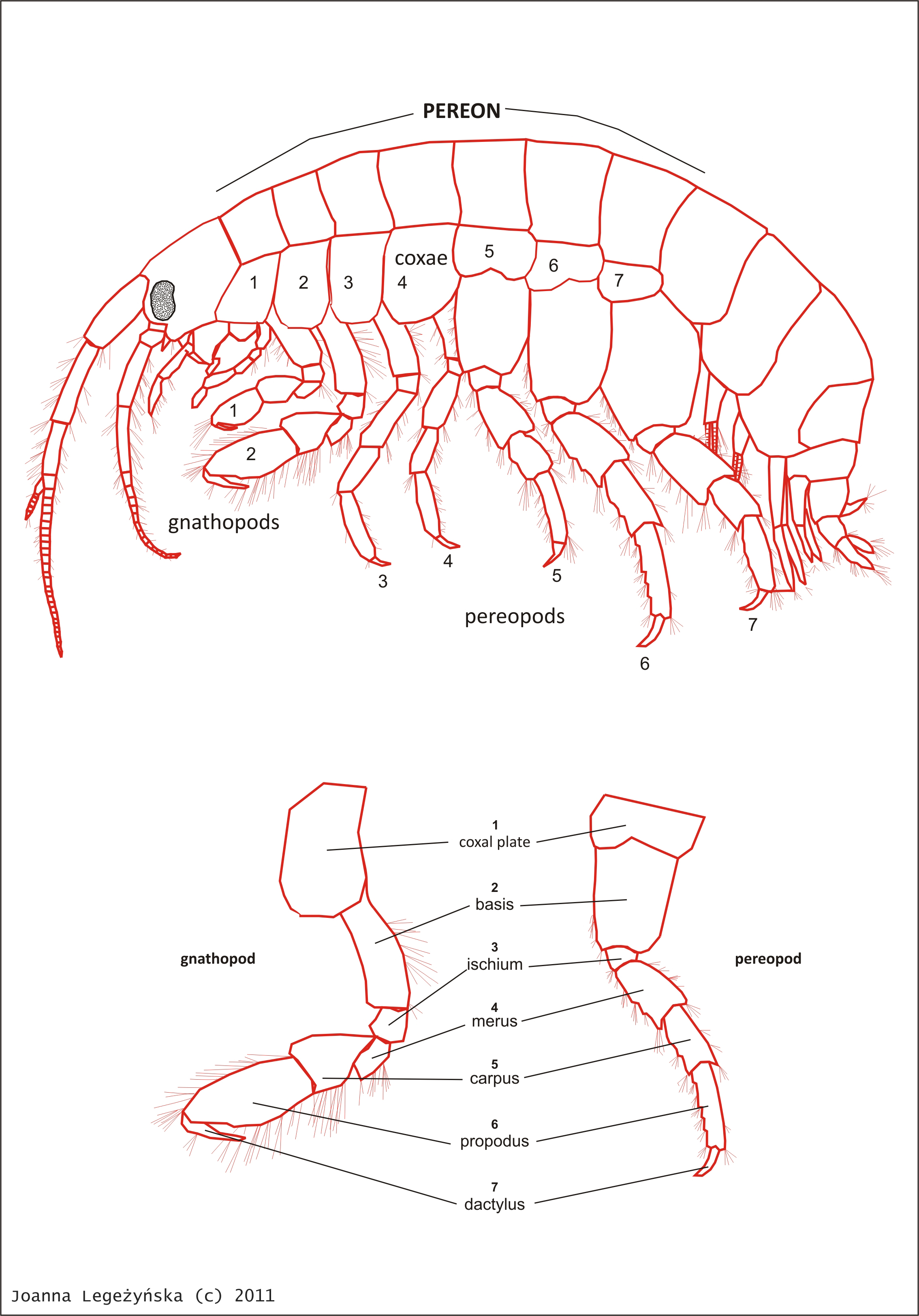:: |
:: |
:: |
:: |
species | :: | bibliography & links | :: | contact | :: | ||||||
|
|||
The pereon carries seven pairs of walking legs - pereopods, each composed of seven articles: the first, coxa is fused to the body and is followed by six free articles: basis, ischium, merus, carpus, propodus and dactylus. The design of the coxal plates, especially plates 1-4 is of great taxonomic importance. The first 2 pairs of pereopods have a quite different structure and are usually called gnathopods. Gnathopods are adapted for feeding, burrowing, defense, cleaning and reproductive activities. They are usually larger than other pereopods and their structure is useful taxonomic feature. In some groups the second ganthopods are much larger in males. Pereopods 3-4 are usually slender with the last article (dactylus) oriented backwards and may be involved in grooming and swimming activities. In the domicolous taxa the glands located in 3-4 pereopods produce adhesive secretion used for tube or nest construction. Pereopods 5-7 are more robust, often elongate with forward directed dactylus and may assist in moving on different types of substrate and burrowing. Mature males have a minute pair of penial processes that hang ventrally from the seventh segment of pereon. Females carry oostegites (brood plates) attached to the inner base of coxal plates 2-5. They increase in size and become more setose as body growth proceeds to form a marsupium (brood pouch) in which the eggs are hatched and the young develop. The respiratory gills are thin, oval structures attached to the medial surfaces of coxal plates 2-7. |
|||
|
|||
